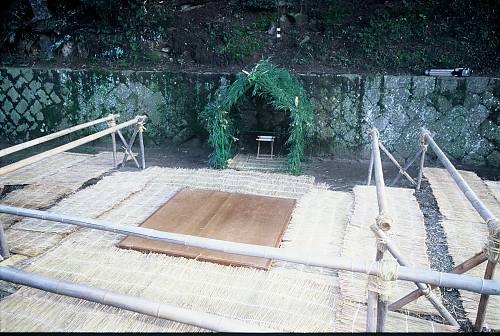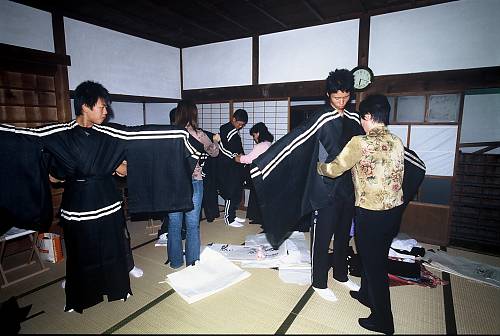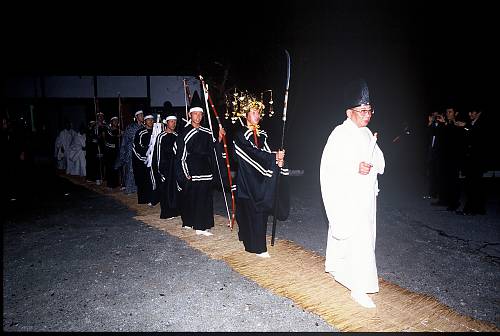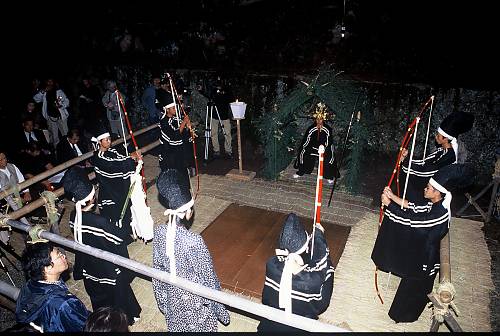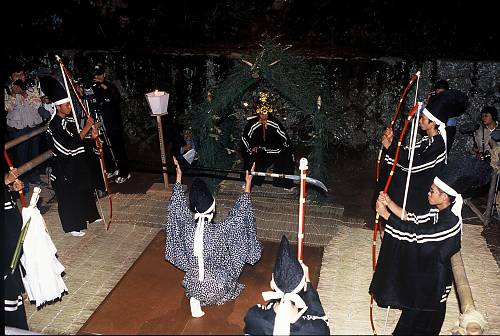Daimokutate
Inscribed in 2009 (4.COM) on the Representative List of the Intangible Cultural Heritage of Humanity
In Yahashira Shrine of Nara City in central Japan, young men of the Kami-fukawa community stand in a semi-circle dressed in samurai clothes and carrying bows. One by one, they are called to the centre by an old man who reads the name of a character in the tales of the feud between the Genji and Heike clans. Each in turn delivers his character’s lines from memory, in a distinctive accent but without acting or musical accompaniment. When all twenty-six characters have spoken, the youths rhythmically stamp their feet and sing themselves offstage. Originally a rite of passage at the age of seventeen to mark the formal acceptance of the eldest son into the community of the twenty-two families of Kami-fukawa, the Daimokutate is now performed annually in mid-October by young men of various ages and from many different families. Indeed, since the twentieth century, the dispersion of the original twenty-two families has meant that other residents of Nara have led the effort to preserve the ceremony. Unique in Japan as a dramatic performance without acting or music, the Daimokutate is an important marker of identity and plays an indispensable role in maintaining solidarity in this mountainous town.

